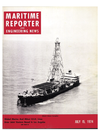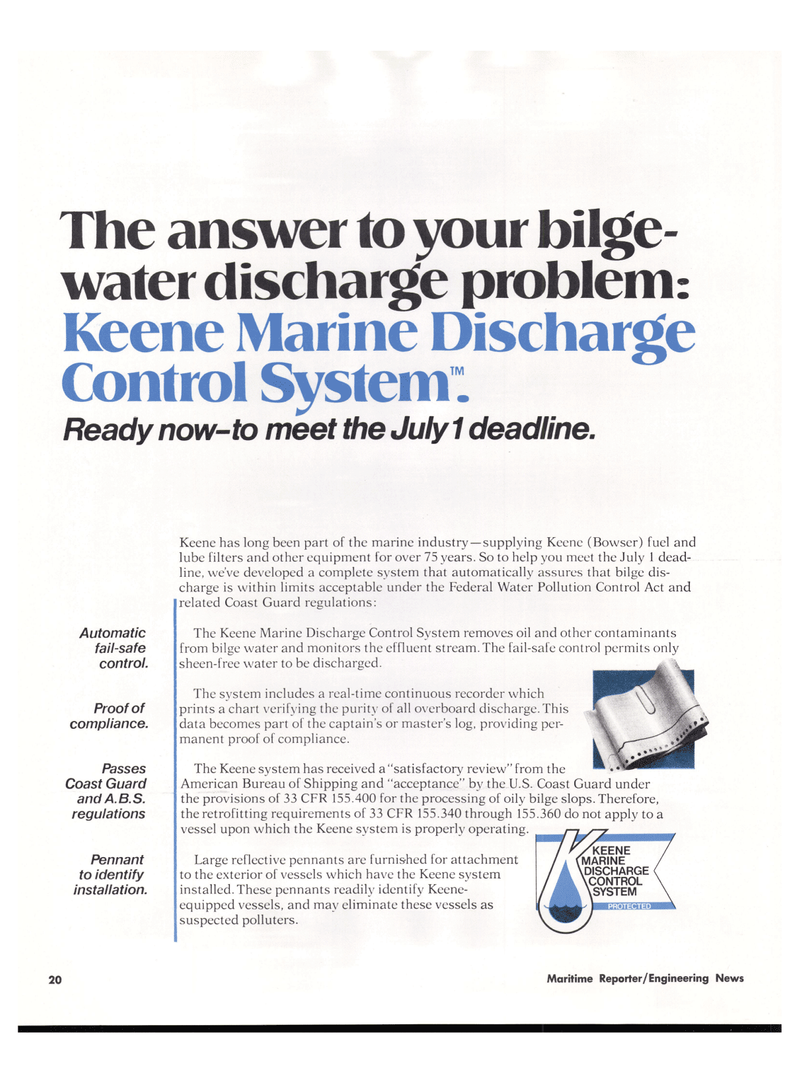
Page 18: of Maritime Reporter Magazine (July 15, 1974)
Read this page in Pdf, Flash or Html5 edition of July 15, 1974 Maritime Reporter Magazine
The answer to your bilge-water discharge problem:
Keene Marine Discharge Control System:
Ready now-to meet the July 1 deadline.
Automatic fail-safe control.
Proof of compliance.
Passes
Coast Guard and A. B.S. regulations
Pennant to identify installation.
Keene has long been part of the marine industry —supplying Keene (Bowser) fuel and lube filters and other equipment for over 75 years. So to help you meet the July 1 dead- line, we've developed a complete system that automatically assures that bilge dis- charge is within limits acceptable under the Federal Water Pollution Control Act and related Coast Guard regulations:
The Keene Marine Discharge Control System removes oil and other contaminants from bilge water and monitors the effluent stream. The fail-sale control permits only sheen-free water to be discharged.
The system includes a real-time continuous recorder which prints a chart verifying the purity of all overboard discharge. This data becomes part of the captain's or master's log, providing per- manent proof of compliance.
The Keene system has received a "satisfactory review" from the
American Bureau of Shipping and "acceptance" by the U.S. Coast Guard under the provisions of 33 CFR 155.400 for the processing of oily bilge slops. Therefore, the retrofitting requirements of 33 CFR 155.340 through 155.360 do not apply to a vessel upon which the Keene system is properly operating.
Large reflective pennants are furnished for attachment to the exterior of vessels which have the Keene system installed. These pennants readily identify Keene- equipped vessels, and may eliminate these vessels as suspected polluters. 20 Maritime Reporter/Engineering News

 17
17

 19
19
